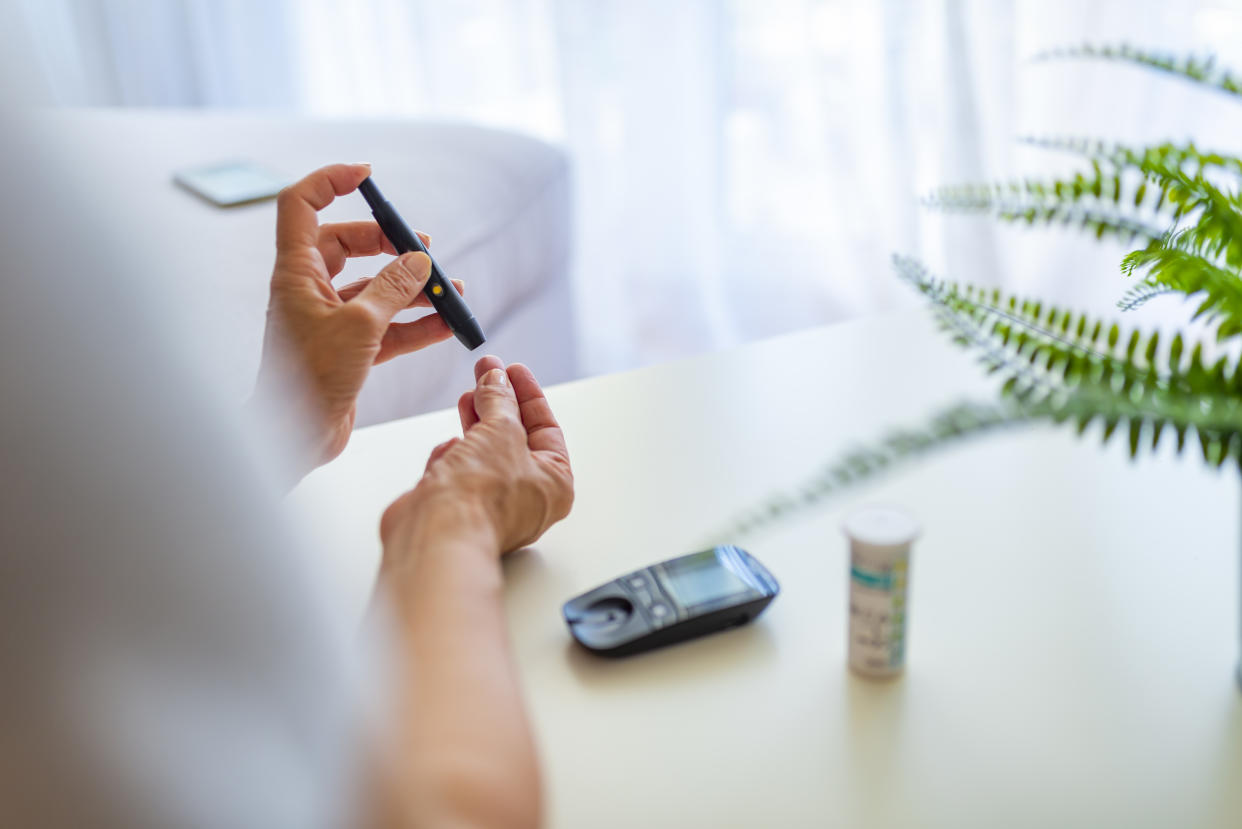Diabetes: the symptoms, treatment and everything else you need to know

Diabetes is a health epidemic that can lead to everything from heart disease and kidney damage to blindness and even amputations.
One in 15 people in the UK suffer from the condition, but up to a million are clueless their blood sugar levels are out of control, Diabetes UK statistics show.
And in the US, 30.3 million (9.4%) people are thought to have diabetes, of which nearly a quarter (23.8%) are undiagnosed, according to the National Institute of Diabetes and Digestive and Kidney Diseases.
READ MORE: Being even slightly overweight doubles your type 2 diabetes risk
Diabetes occurs when a person’s blood sugar levels rise too high.
While glucose is essential to giving us energy, the hormone insulin is also required to move sugar from the blood into cells, where it acts as fuel.
Type 1 diabetes comes about when the pancreas stops producing insulin altogether.
This makes up around 8% of all diabetes cases in the UK, according to Diabetes UK.
Exactly why it occurs is unclear.
For some reason, a patient’s body attacks the cells in their pancreas that produce insulin.
Type 1 diabetes is therefore an autoimmune condition.
Most diabetics (around 90%) have type 2.
The remaining few tend to have rarer forms of the condition, like gestational diabetes, which can develop during pregnancy.
READ MORE: How to tell if your child has type 2 diabetes
In type 2 diabetes, the pancreas initially responds to glucose in the blood by releasing insulin as normal.
However, this “doesn’t work properly”, according to Diabetes UK.
With blood sugar levels continue to rise, more of the hormone is released.
For some, the pancreas “tires out” and stops producing insulin.
Unlike type 1, type 2 diabetes can be affected by lifestyle.
Overweight and obese people are more at risk.
Type 2 diabetes also becomes more common with age.
White people are more at risk when they reach 40.
Those who are African-Caribbean, Black African or South Asian - who are more at risk anyway - see their odds rise at just 25.
A family history of the condition also makes you more vulnerable.
Having a first-degree relative with type 2 diabetes boosts a person’s odds by between two and six times, according to Diabetes UK.
Both type 1 and 2 are equally as serious and lead to serious complications if left untreated.
What are the symptoms?
Type 1 symptoms tend to come on quickly, over a matter of weeks or even days.
One of the earliest warning signs is a frequent need to urinate.
This occurs as the body tries to rid the blood of excess glucose through the kidneys.
Type 2 diabetes is often more gradual.
With the cells not getting enough glucose, many become very tired.
However, three in five patients have no symptoms when diagnosed with type 2, according to Diabetes UK.
Many also dismiss the vague warning signs as nothing to worry about.
As a result, some live with the condition for up to a decade, not knowing it.
READ MORE: 'Great British Bake Off' to cut Paul Hollywood's 'stupid' diabetes joke
Symptoms that both type 1 and type 2 diabetes share include extreme thirst, unintentional weight loss, thrush or genital itching, slow wound healing and blurred vision.
High levels of glucose in urine make the genitals the “perfect breeding ground” for fungal infections, hence many developing thrush.
While they may be easy to miss, ignoring symptoms can trigger diabetic ketoacidosis (DKA).
This occurs when the body starts to run out of insulin.
The body responds by breaking down fat for energy, which causes the release of harmful substances called ketones, according to the NHS.
Left untreated, DKA can be life-threatening.
How is diabetes treated?
Type 1 diabetes is incurable, with patients requiring lifelong insulin.
This can be taken via an injection or pump.
Some may be able to have a transplant of the pancreatic cells that produce insulin.
While not a cure, the procedure could prevent “hypos” - when blood sugar levels fall dangerously low, usually due to an incorrect insulin dose.
Some type 2 diabetics also require insulin to help control their blood sugar levels.
Tablets, the most common being metformin, can also help.
Type 2 diabetics can go into remission if their blood sugar levels return to normal, usually via weight loss.
Shedding around 33lbs (15kg) “significantly” increases a patient’s hopes of remission, according to Diabetes UK.
However, there is no guarantee.


